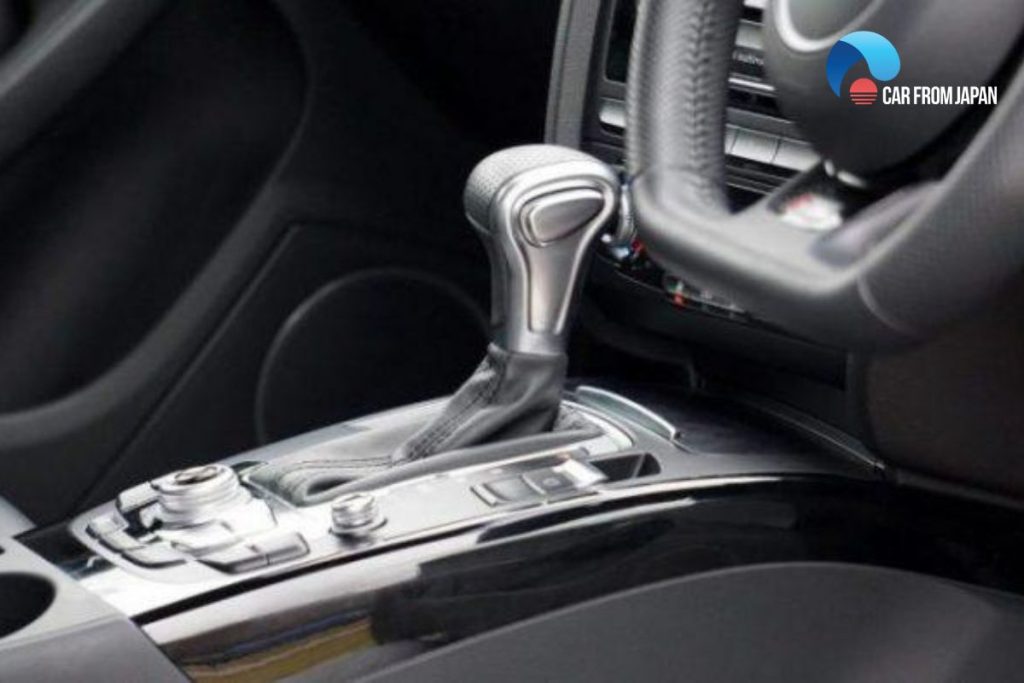What happens when you skip gear in a manual transmission? Is it right or cause any harm to the engine? Well, it’s a common practice for people who drive manual vehicles daily.
They skip from second to fourth or fourth to sixth instead of sliding through all the gears. Is it a safe practice? Let’s find out.
Contents
- Skip Gear in a Manual Transmission: When It Is Safe
- Skip Gear in a Manual Transmission: When It Is Unsafe
- Can You Skip Gears In a Manual Car?
- For New Drivers: How To Drive A Manual Transmission Without Stalling?
- FAQs on Skipping Gear In a Manual Transmission
- Why do some advanced drivers skip gears to slow down instead of downshifting through every gear?
- Does fuel economy improve if you skip gears on upshifts?
- Is it safe to skip gears while going uphill?
- Can gear skipping shorten clutch life?
- Why do truck and bus drivers skip gears routinely, while car drivers don’t?
- Is it possible to skip from 1st gear directly to 5th or 6th?
- Conclusion
Skip Gear in a Manual Transmission: When It Is Safe
Most of the manual cars these days have five- or six-speed gears. It’s not a problem at all if you start in the second gear and then directly switch into the fourth gear.
You can even go from the fourth to the sixth if you are already driving at a highway speed. In a word, you can skip a gear if the driving condition demands it.
It’s all about adjusting to the rev when you skip gear in a manual transmission. If you make the shift from second to fourth, the rev will drop from a high from the low level.
In that case, you should wait a bit before letting the clutch out, giving the transmission enough time to adjust to the rev change.
On the other hand, you should push the clutch first when moving the gear from fourth to second so that the clutch speed matches to the engine speed.

Skip Gear in a Manual Transmission: When It Is Unsafe
Older vehicles with a limited gear selection are not suitable for this stunt. For example, a three-speed transmission will respond badly if you skip the gear from first to third or vice versa.
In addition, it could be harmful to the engine if you can’t keep up with the changing of the rev level.
For example, if you change the gear drastically from fifth to the first while at speed can create an over-rev condition, causing the valves to meet the pistons.
It will affect the engine very badly and result in an expensive repair job. The damage won’t be severe in case of a new clutch except for eating the remaining clutch lining.
See More: Which One Is Faster: Manual or Automatic Transmission?
Can You Skip Gears In a Manual Car?
Yes, you can. It’s possible to skip the first gear when you are moving a car from the halted position. However, you have to struggle slightly more in that case to match the engine and the clutch.
You can completely release the clutch at the first gear but will have to wait a bit when shifting to the second gear.
So, skipping the gear when you are just switching the engine on will not bring any severe side effects. However, it’s not the best thing to practice either because the clutch will wear out faster.
Our advice: When shifting gears, the driver should change gears from 1 to 5 in order and avoid skipping gears, causing the vehicle to not have enough traction and making it unsafe.
Before shifting to a large gear, the vehicle needs to run faster to take the momentum, and when the vehicle is slowing down, it returns to a corresponding low gear to ensure traction.
Drivers should avoid driving at slow speeds with high gears to limit vehicle vibrations when accelerating.
For New Drivers: How To Drive A Manual Transmission Without Stalling?
We can say driving a manual transmission vehicle without stalling requires practice and coordination between the clutch, throttle, and gears. To become a professional driver, you can follow tips below.
Be smooth with clutch control
Smooth clutch control is crucial to prevent stalling. Avoid releasing the clutch too quickly or abruptly. Instead, release it gradually while applying the appropriate amount of throttle.
Use the handbrake
If you’re starting on an incline, consider using the handbrake or parking brake to prevent the vehicle from rolling backward.
Engage the handbrake, press the clutch pedal, shift into first gear, find the bite point, and then release the handbrake while gradually releasing the clutch.
Practice in an empty parking lot
Find an empty parking lot or open space where you can practice starting, stopping, and shifting gears without the pressure of traffic. This allows you to focus solely on mastering the coordination of the clutch, throttle, and gears.
Practice downshifting for braking
Downshifting while braking helps you maintain better control of the vehicle and can prevent excessive wear on your brakes. Practice rev-matching while downshifting to match the engine speed with the new gear.
Take it slow
Learning to drive a manual transmission vehicle takes time and patience. Start with simple driving situations and gradually progress to more challenging ones as you gain confidence and experience.

FAQs on Skipping Gear In a Manual Transmission
Why do some advanced drivers skip gears to slow down instead of downshifting through every gear?
It reduces unnecessary clutch and synchro wear. For example, braking from highway speed directly into 2nd gear (with rev-match) is more efficient than stepping through 5-4-3-2.
Does fuel economy improve if you skip gears on upshifts?
Sometimes. Skipping from 2nd to 4th or 5th reduces time spent at high RPM, saving fuel. But only if the engine doesn’t lug at the lower RPM in the higher gear.
Is it safe to skip gears while going uphill?
Not recommended. Skipping to a higher gear uphill can cause engine lugging, loss of power, and excessive stress on bearings and pistons.
Can gear skipping shorten clutch life?
Only if done poorly. Smooth rev-matched skips may actually extend clutch life by reducing the total number of clutch engagements.
Why do truck and bus drivers skip gears routinely, while car drivers don’t?
Heavy vehicles have many more gears (8–18), so skipping saves time and effort.
Car transmissions (5–6 gears) don’t benefit as much from skipping!
Is it possible to skip from 1st gear directly to 5th or 6th?
Yes, but not practical. The engine will likely lug badly unless you already have significant momentum, making it unsafe and inefficient.
Conclusion
You might have figured out that it’s safe to skip gear in a manual transmission if you can stay within the rev limit. Give the engine time to match the gear speed and save both the components in the process.



Please upload more videos it’s easy to understand when watching a video thanks for the program
This is very helpful, I like it so much .Thanks
Article has been quite helpful. I really get sick when that happens.
Very useful information this goes a long way to keep us informed.
I have learn alot from you guys..
Kudos…keep on with your excellent info.
I looked forward to seeing a mention of the role of the Neutral gear in managing the rev tempo as the lazy driver jumps over gears. Is it not recommended to glide via Neutral as one shifts, for instance, from gear 2 to 4 or vice versa in cases of changing down?
Good information. I have learnt
Thanks for the information.
When should you engage an overdrive button on an Automatic car. And on a normal speed like between 0-50mph what should be the indication on the dash board, OVERDRIVE OFF or otherwise
i started learning to drive with an automatic car, im failing to cope driving a manual car, but suppose with more practice wiil be easier for me.
thanx